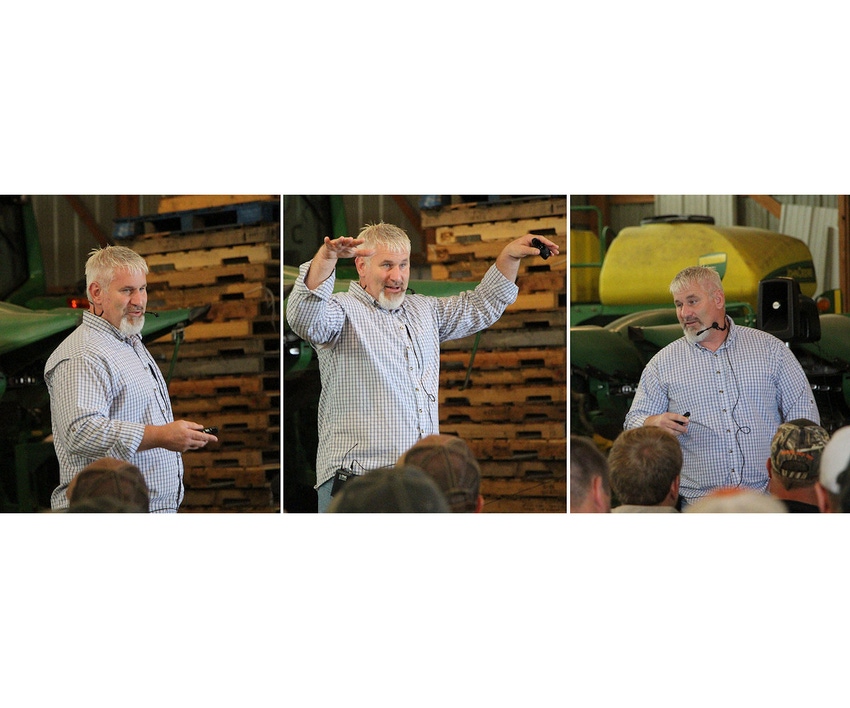February 23, 2016

Two men in the quest for high-yield corn, one a professor and the other a farmer, are turning the phrase “the devil’s in the details” on its ear. Both will tell you it’s the details that make the difference between getting the average of 170 bushels per acre and the record of 500-plus. In this two-part series we'll feature information from Randy Dowdy and Fred Below.
First up is Randy Dowdy, a farmer from Valdosta, Ga.,who set the world record for corn yield in 2014 with an average of 503 bushels per acre. He shares his thoughts on the topic.
In the second installment, Fred Below, plant physiologist, and University of Illinois researcher is well-known for his work on high-yield corn and soybeans. He developed “Seven Wonders of the Corn Yield World” and “Six Secrets of Soybean Success” teaching tools to improve crop productivity.
These interviews were captured during speaking engagements held late in 2015. Each speaker talks about the secrets of growing high-yielding corn and soybeans. Below was a speaker at West Central’s Leaders of In-furrow Technology (LIFT) summit in Minneapolis. Dowdy spoke at a Dekalb grower day in Glencoe, Minn.
We start with Randy Dowdy, Fred Below will be our second installment tomorrow.
One-on-one with Randy Dowdy
What are your plans in 2016 for breaking 500 bushels again?
There are things that we’re going to continue to do. We’re still going to do population trails; we’re still going to do variety trials; and we’re still going to test different row spacing.
What are the lessons you teach farmers?
I encourage people to be students of their crop. Understand where yield is gained, where it’s lost and where it has potential to be captured. Determine what is the best hybrid to plant based on variety trials. Do population trials to figure out what’s the best population for that hybrid and what’s the best row spacing. Look at tissue tests and soil tests, and understand where yield was being lost and understand why you’re not obtaining that potential. If somebody does those things, by far they can increase their production.
What’s your one tip above all else?
Everybody’s looking for a silver bullet. I don’t think it’s that easy. I think it’s truly a system. You’ve got to make sure that compaction is not an issue. Make sure that herbicide damage or herbicide timing of application is not a problem. Make sure disease is not the problem. Make sure there is not too much or too little water, and if there is, being able to address that problem. Make sure that you don’t have inconsistent plant emergence. So there are a lot of things that a farmer can correct and not just blame his yield increase or decrease on the weather.
You talked about the importance of even plant emergence. How do you achieve that?
The goal is to get every plant up on the same day and every one of them looking like a clone image of each other. And there are three or four factors that could affect that. One is at planting. You want to make sure all the seeds are planted at the same depth so that they have an opportunity to emerge at the same time. Maybe you’re planting too fast, which can cause the planter to move up and down.
What are the other factors?
It could be not having enough moisture in the soil. If you get a packing rain or if the ground is hard, having the
ability to apply moisture can help correct the situation. Or it could be poor seed-to-soil contact, where you’re not getting a correct seedbed when you plant. So there are three or four factors that affect getting even emergence.
What are five technologies that have big payback?
Tissue tests; soil tests; GPS and data management, from planting to the combining; irrigation and irrigation monitoring through soil probes to see how much moisture you have in the beds; and weather stations to calculate evapotranspiration, solar radiation, relative humidity and rainfall.
How do you improve your bottom line when corn prices are under $5 a bushel?
You have two choices to make a profit. If you’re going to go into it on paper and find that you’re not making money at your historical yields and you don’t know if the price is going to go up, you have to either reduce your costs or increase yield. I encourage you to increase yields.
Don't miss our talk with Fred Below in the next installment.
About the Author(s)
You May Also Like




